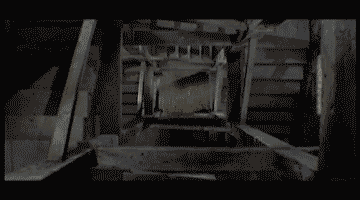Vertigo
Hitchcock’s 1958 masterpiece Vertigo is a striking examination of what constitutes a woman, as well as a showcase for groundbreaking technical experimentation. The famous Vertigo shot, or dolly zoom, cemented its place in later films of the 20th and 21st centuries. In technical terms, the Vertigo shot increases focal length while the camera simultaneously moves out, creating a disorienting effect. In psychological terms, it combines the forces of attraction and repulsion; the viewer feels they are being drawn closer to a focal point but simultaneously pushed away from it. In this way, the Vertigo shot embodies the paradoxical nature of woman in Vertigo (and in Hitchcock films in general). While woman is attractive and pleasurable, she is also anxiety-inducing and the symbol of the threat of castration. The Vertigo shot reflects the dizzying plurality, ambiguity, and contradiction of woman.
Laura Mulvey discusses how woman’s visual presence is an alien presence in the narrative. This applies to the Vertigo shot as well. Both woman and the Vertigo effect do not signify any literal changes in the narrative (i.e. the environment around Scottie is not literally changing dimensions), but instead evoke emotions of awe, fear, and dread. One may go further and use François Truffaut’s observation of Vertigo’s “dream-like quality” to argue that just like the Vertigo shot is a product of imagination, woman herself is also not real in Vertigo and solely exists for symbolic and emotional purposes. As Mulvey also notes, the use of the Vertigo shot demonstrates how Scottie creates the film’s action, reaffirming how woman is only a passive subject in the narrative. Just as Scottie commands the stage of spatial illusion and asserts his gaze through the camera’s subjective point of view, he commands woman and asserts his gaze upon her. Finally, the Vertigo effect illustrates how Scottie’s acrophobia distorts his perspective and causes him to project an irrational image of his surroundings. Similarly, Scottie’s castration anxiety after losing “Madeleine” drives him to project his sexual fantasy of her onto Judy. The changed outward appearance of both the environment and Judy has strong visual impacts throughout the film.


Recent Comments